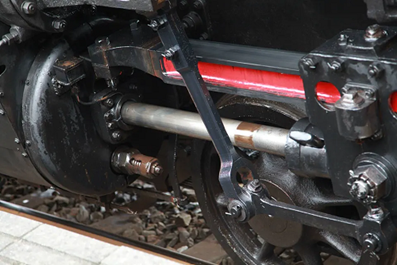3 Options & Flushing to Remove Water from Hydraulic Oil
Hydraulic fluid helps keep the hydraulic system lubricated and functioning correctly. However, there are times when water and other contaminants can get into the system and affect its performance.
.png?width=398&height=265) Yet, with proper maintenance, the hydraulic oil should be changed at set intervals, such as after a specific number of operating hours. Regular fluid changes help maintain the hydraulic system and keep it working properly.
Yet, with proper maintenance, the hydraulic oil should be changed at set intervals, such as after a specific number of operating hours. Regular fluid changes help maintain the hydraulic system and keep it working properly.
Why Would a Hydraulic Flush Be Required?
There are times when simply changing the hydraulic fluid is not sufficient, and a hydraulic oil flushing procedure is required. Some of the more common reasons you will want to flush the system include:
- There is water in the system.
- There is sludge in the system.
- The system is brand new.
- The system overheated
- The system had a major failure requiring a complete overhaul.
- There has been a major component failure due to poor oil quality.
- You are switching to a different type of hydraulic fluid.
- The system has sat unused for a long period of time.
Signs of Water Contamination
Moisture can be a problem for hydraulic systems. Some water in the fluid is expected. However, when the amount of water dissolved in the oil becomes excessive it begins to affect the molecular chemistry of the hydraulic fluid.
The most notable sign that water contamination has occurred is cloudy oil. The oil could also look discoloured depending on the type of fluid used. Sometimes the oil will look like chocolate milk with air bubbles.
For example, if you use mineral hydraulic oil, you will notice cloudy oil quite easily if the water saturation level has reached between 200 and 300 ppm. Yet, once the oil becomes cloudy, this range is the minimum amount of water. Therefore, you could easily have a higher water saturation level.
Another sign of water contamination is a loss of fluid power. Since dissolved water is in the fluid, it loses its viscosity and ability to transmit fluid power.
How to Remove Water from Hydraulic Oil
There are a few different methods to remove water from hydraulic oil you can try before you flush the system, such as:
- Headspace Dehumidification – The air in the reservoir is dehumidified to create dry air. This causes the water in the oil to transform into water vapour and eventually be removed from the system.
- Polymeric Filters – This method uses super absorbent polymer filters to trap the water in the filler material. Removing water from hydraulic oil this way is well suited for a small amount of water.
- Vacuum Distillation – This method creates a vacuum and uses heat to boil the water to convert it into water vapour and reduce the saturation level in the fluid.
How to Flush a Hydraulic System
If the above methods to remove water from hydraulic oil do not work, or if the oil contains dirt or sludge, then a complete system flush is highly recommended. The simplest flushing method is called the “double oil and filter change” method and includes the following steps:
- Step 1: Drain the oil and change the filters.
- Step 2: Install new filters and the minimum fluid amount.
- Step 3: Turn on the system to circulate the fluid until it fully cycles through the system at least five times and reaches the minimum operating temperature for the system.
- Step 4: Drain the fluid, clean the reservoir, and change the filters.
- Step 5: Install new filters including reservoir suction gauzes and fill the reservoir to the maximum fluid level.
- Step 6: Turn on the system and allow the fluid to circulate through the entire system and cycle at least five times.
- Step 7: Check the fluid level and add more fluid if necessary.

Keep in mind that you can use other flushing methods to flush a hydraulic system, such as high-velocity hydraulic flushing, chemical flushing, and power flushing. These require special equipment to perform and involve more complex steps like bleeding the lines to remove air.
Hydraulic System Flushing Oil, Parts, and Components
Maintaining hydraulic systems can help prevent having to do a complete system flush. However, if too many contaminants or water have entered the system, a full system flush is the best solution.
To find the hydraulic oil, parts, and components you need to do a system flush or routine maintenance and repairs, or if you have further questions about removing water from hydraulic oil, please feel free to contact White House Products, Ltd. at +44 (0) 1475 742500 today!
Back to blog posts